
Structual
Standing buildings
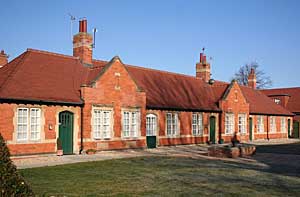
St Leonard's Hospital almshouses on London Road, Newark. © Copyright Richard Croft and licensed for reuse under this Creative Commons Licence.
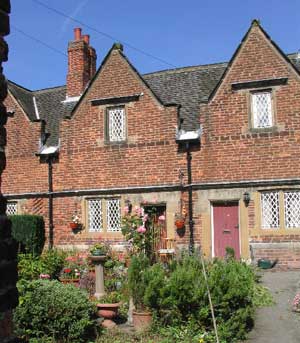
Willoughby Almshouses, Cossall. © Copyright Gill and licensed for reuse under this Creative Commons Licence.
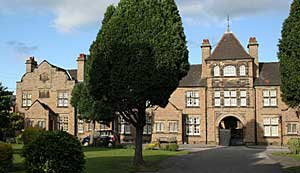
Sir John Robinson’s Almshouses, Daybrook. © Copyright Alan Murray-Rust and licensed for reuse under this Creative Commons Licence.
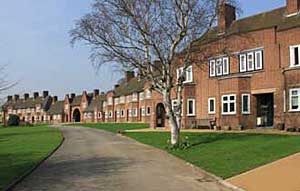
Collins Homes on Derby Road, Beeston.
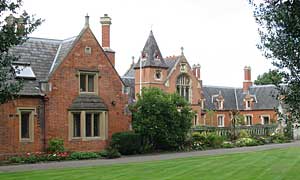
The Hospital of the Holy and Undivided Trinity, West Retford.
The oldest almshouse, and which is still in existence, is St Leonard’s Hospital in Newark. The hospital was leased in 1609 to Sir William Cecil, Lord Burley, (afterwards Earl of Exeter) grandson of William Cecil, Queen Elizabeth I’s chief minister who carried out extensive building work and renamed it Exeter House and was known as 'the spital' On the death of Earl of Exeter in 1642 the Dowager Countess built a house on Northgate with one acre of ground enclosed by brick or stone wall enclosing an orchard or garden and known as Hospital House of St Leonards. In 1888 the old building in Northgate was pulled down and replaced by six comfortable homes endowed by Joseph Richardson with a house at either end for a 'deserving married couple to reside in during old age'.
George Willoughby’s Hospital was built in Church Lane, Cossall in 1685, it comprised of eight houses and a chapel and was to accommodate four poor men and four poor women, and they all had to be single; the men over 60 years of age and the women over 55 years. The almshouses remain in the village and are a feature within in it.
Sir John Robinson, founder of the Home Brewery, was an Alderman, High Sheriff and Justice of the Peace in Nottingham and the Sir John Robinson’s Almshouses in Daybrook are situated next to the old Home Ales Brewery building on Mansfield Road, Daybrook. They were erected in memory of his son, John Stanhope, who died at the age of 31 years. Sir John had previously established some almshouses at Sherwood to celebrate his son’s coming of age and at the service of dedication to the Daybrook houses occupants from both almshouses were present. There were to be twelve houses, each with a parlour, scullery and pantry on the first floor and two bedrooms accessed by an easy staircase on the first floor. The almshouses are still in existence.
Possibly one of the most notable almshouses is the Abel Collin’s Almshouses (now known as Collin's Homes) situated on Derby Road, Beeston. They were founded in 1709 by Abel Collin whose father Lawrence Collin who made his money through trading in wool. He left money to his two sons, Thomas and Abel, the latter increased the family’s wealth and when he died a bachelor in 1705 he left a bequest to create a home for the needy of Nottingham. In 1708 land was purchased to build the Almshouses on Friar Lane, Nottingham and could initially accommodate twenty people, later increased to twenty four. The Carrington Street houses were built in 1829 and both sets of almshouses were well-known landmarks. The Carrington Street homes were abandoned in the 1930s when the residents were moved to the new site in Beeston, and finally demolished in 1954 to make way for a car park. The Friar Lane residents were gradually moved to the new site and in 1956 the trustees agreed to demolish the buildings. This caused something of an outcry because of their architectural significance.
Both sets of almshouses were designed for people over seventy years of age of ‘irreproachable character but ‘in reduced circumstances’. The present site was built on a 5-acre nursery site and provided accommodation for 24 single bungalows which has gradually been increased and the Almshouses can accommodate up to 100 elderly residents. For more information on the history of the charity see the Collins Homes website.
The Hospital of the Holy and Undivided Trinity, West Retford. The hospital was set up from the will of John Darrel, a local doctor, in 1671, to provide ‘hospitality’ to 15 "Poor Bachelors or Widowers of good Character, who are not less than 50 years of age". The current buildings date from two phases. The chapel dates from 1833 and the two projecting L-shaped wings by Edward Blore house 15 cottages for the hospital’s brethren. The central section, dominated by the tower, was added in 1872. For further information see the hospital website.